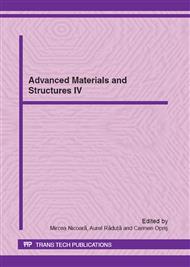p.3
p.11
p.15
p.21
p.27
p.31
p.37
p.41
Establishing the Glass Forming Ability of Ferromagnetic Bulk Amorphous Alloys Using a Mathematical Model Based on the Chemical Composition
Abstract:
This paper presents a mathematical model that describes the influence of the chemical composition on the glass forming ability of ferromagnetic alloys. Glass forming ability is given by the difference between the glass transition temperature and the primary crystallization temperature of the alloy. The glass forming ability is better as long this difference has a higher value. These temperatures were determined using differential thermal analysis.
Info:
Periodical:
Pages:
11-14
Citation:
Online since:
May 2012
Authors:
Price:
Сopyright:
© 2012 Trans Tech Publications Ltd. All Rights Reserved
Share:
Citation:


